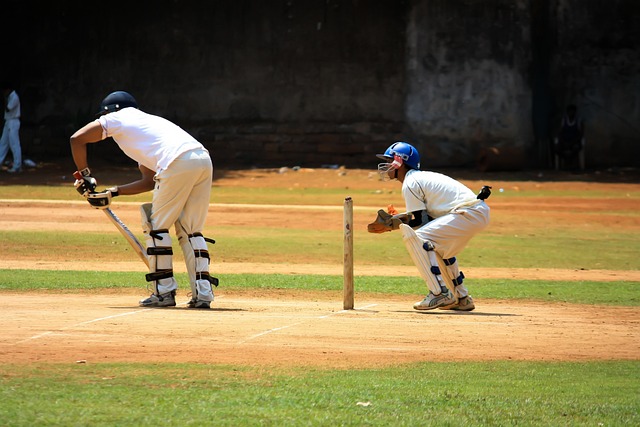Why Does The Site Show Ww 99Exch Com Instead Of Www?
“`html
Introduction
When you visit a website, the web address typically begins with the well-known www prefix, such as www.example.com. This prefix helps browsers and servers recognize the domain or subdomain to connect to. However, sometimes users might encounter unusual subdomains or prefixes, such as ww 99exch com, which raises questions about why these non-standard addresses appear and what they mean. This article explores the reasons behind seeing a site labeled as ww 99exch com instead of the familiar www, what implications this may have, and how domain naming conventions work.
Understanding Domain Names and Subdomains
Domains are human-readable addresses for websites that correspond to IP addresses on the internet. Domains consist of multiple parts separated by dots. For example, in www.example.com, com is the top-level domain (TLD), example is the second-level domain (SLD), and www is usually a subdomain.
While the www prefix is familiar and historically associated with the World Wide Web, it is technically just a subdomain like any other. Websites can define any subdomain they want, such as blog.example.com, shop.example.com, or even ww.example.com. The subdomain helps servers route requests to different services or content within the domain’s infrastructure.
Therefore, seeing something like ww 99exch com implies the domain or subdomain in question deviates from the typical usage of www. This can sometimes be due to typographical errors, deliberate design choices, or technical configuration.
Common Reasons Behind Seeing "ww" Instead of "www"
The appearance of the prefix ww without the full www can have several explanations:
- Typographical mistakes: Sometimes users or marketers accidentally type
wwinstead ofwww, dropping one "w" by mistake. This is one of the most common reasons. - Intentional domain structure: Site administrators may intentionally set up a subdomain such as
ww.example.comto serve specialized content or for internal routing purposes. In such cases,wwis a completely valid subdomain, though non-standard. - Branding and marketing: Companies sometimes create unique subdomains reflecting branding or campaign naming conventions. While
wwwis standard, nothing prevents using others likeww99exch.comas a domain or subdomain if it aligns with their naming strategy. - Technical misconfiguration: A hosting or DNS setup error can cause an unusual subdomain to display. For example, if the DNS records or redirects are improperly configured, users might see unexpected addresses like
ww 99exch com.
How Domain Names Can Be Mistyped or Misconfigured
When users enter web addresses manually or follow links, a small human error such as missing a character is common. Typing ww 99exch com instead of www.99exch.com could happen if the "w" is dropped or if spaces replace dots.
Since URLs do not support spaces, many browsers automatically replace or ignore unsupported characters when interpreting these addresses. However, unusual input might cause the browser to display the text literally or fail to resolve the domain correctly.
On the hosting side, DNS (Domain Name System) records map subdomains like www to specific IP addresses. If the DNS setup includes an unintended subdomain such as ww or if the canonical naming or redirects are incorrectly specified, users may get redirected to unusual domain names or see them displayed.
Is "ww 99exch com" A Legitimate Domain or a Scam?
Because the string ww 99exch com resembles a domain name but includes spaces, it’s often a red flag for suspicious activity such as phishing or scams. Cybercriminals frequently register domains that look similar to legitimate ones, deliberately misspelling or modifying them to trick users.
If you encounter a site or link labeled as ww 99exch com or any similar variation that looks off, caution is advised. This kind of domain might attempt to impersonate a legitimate brand (for example, "99exch.com") but use a misleading or unusual subdomain (like "ww") to confuse visitors.
It’s important never to input personal or financial data on suspicious sites and to verify URLs carefully. Using official links obtained from trusted sources is always safer than trusting unconventional domain prefixes.
Technical Details on Domain Prefixes and Their Usage
The www subdomain serves as a conventional pointer to the website’s main web server. Historically, it distinguished web services from other services on the same domain, like mail servers (mail.example.com) or FTP servers.
Modern website infrastructure often allows root domains without prefixes (e.g., example.com) to serve the same website directly, using DNS configuration techniques like A records or CNAME records. This reduces the necessity of strictly requiring www.
However, domains can be configured with any subdomain, including unusual ones like ww or even more complex strings. These configurations might be used for:
- Testing or staging environments (e.g.,
test.example.com) - Content delivery segregation (e.g.,
cdn.example.com) - Load balancing or geographical routing variations
How to Verify and Fix Problems Related to Unusual Domain Prefixes
If you are a website owner or administrator and notice your site displaying an unusual prefix such as ww or others, consider the following steps:
- Check DNS records: Ensure your DNS settings correctly define the intended subdomains and that
wwwpoints to the correct IP address. - Review redirect rules: Sometimes, .htaccess files or server redirects might misroute users, so verify your redirect logic avoids unintended prefixes.
- Use SSL certificates properly: Certificates should cover all relevant subdomains to avoid browser warnings or confusion.
- Test domain accessibility: Use online tools to verify your domain resolves properly and check for typographical or syntax errors in configuration files.
- Educate users: Inform visitors about official URLs, especially if a known issue or phishing attempt is ongoing.
Conclusion
The reason a site might show ww 99exch com instead of the traditional www often boils down to either typographical errors, deliberate subdomain choices, technical misconfigurations, or potential security issues. Understanding the basics of domain and subdomain structures can help web users and owners alike identify and address these anomalies.
Always be vigilant when encountering unfamiliar domain prefixes. Confirm the authenticity of the site through trusted sources, and for webmasters, maintaining clear and standard domain configurations prevents confusion and builds user trust.
```





